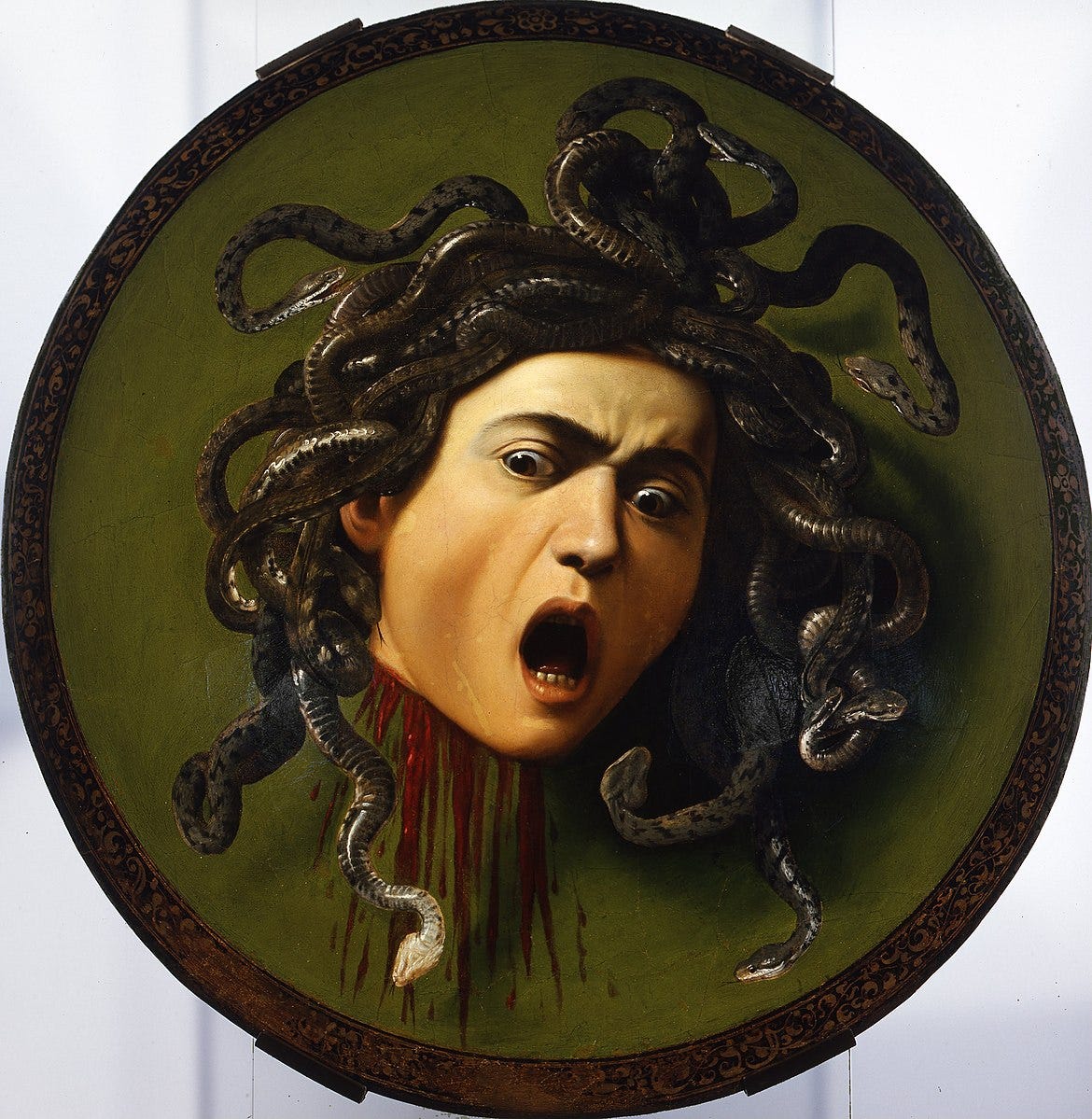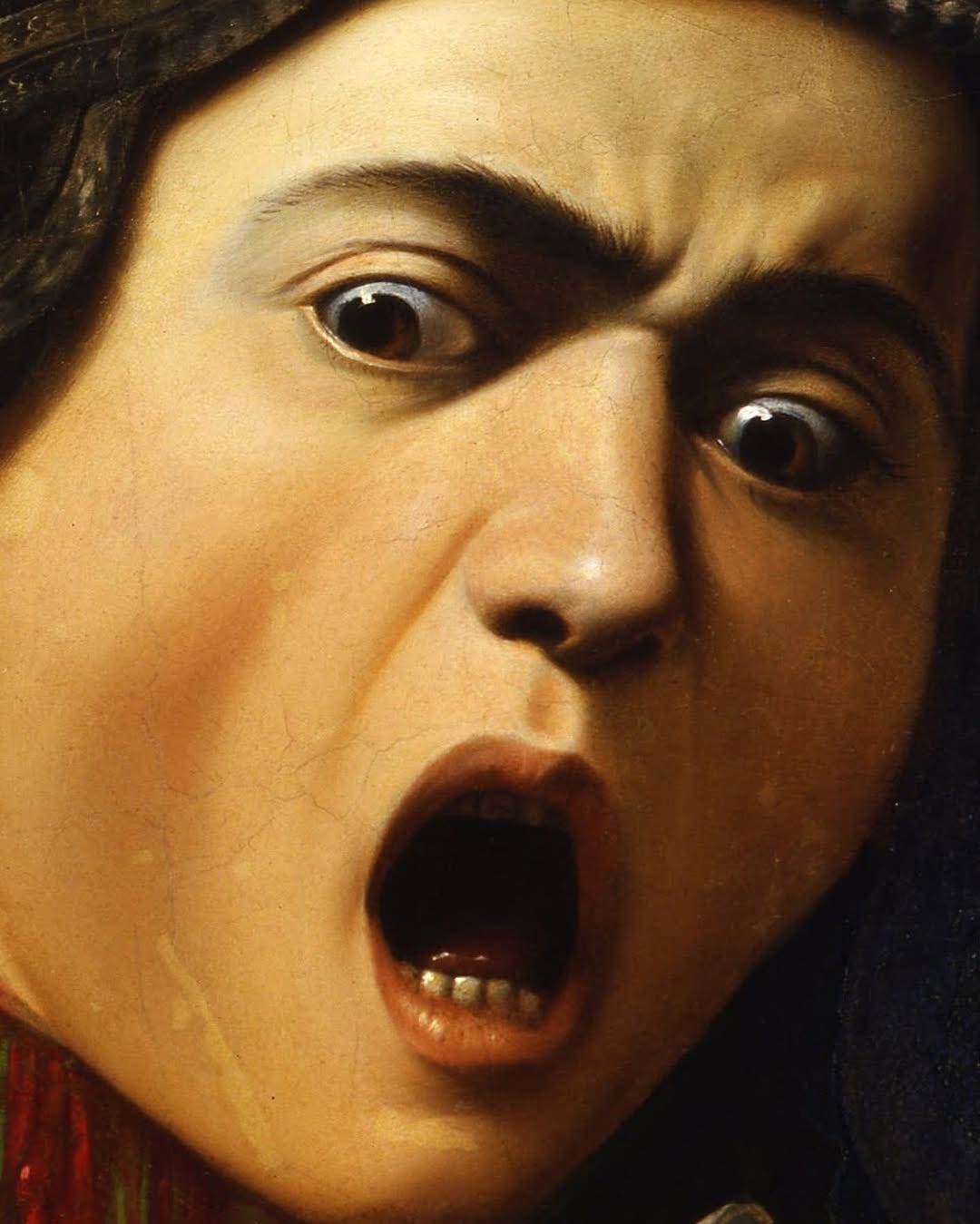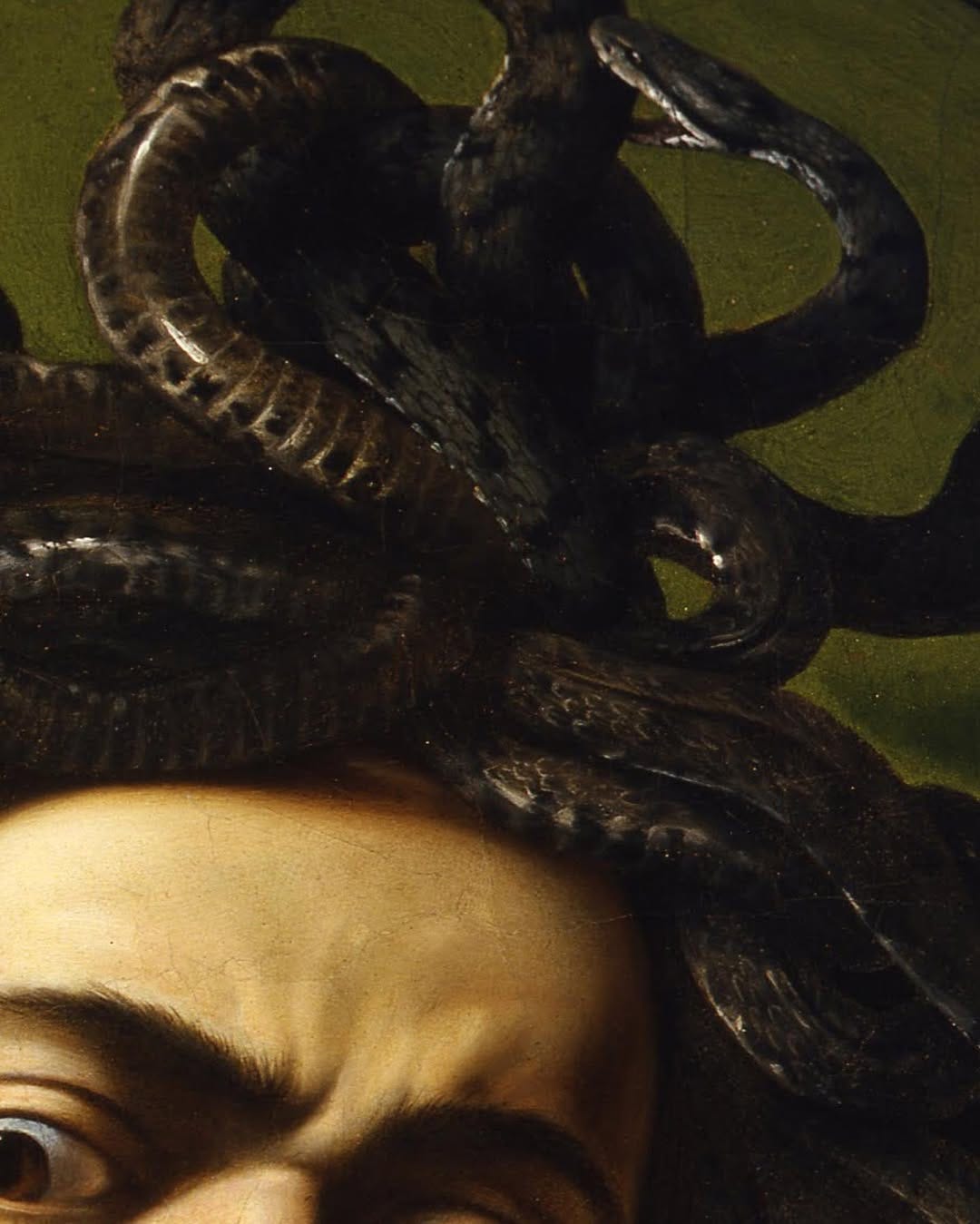CARAVAGGIO - MEDUSA, 1598
The painting depicts the moment immediately after the Greek hero Perseus has beheaded Medusa, the Gorgon whose gaze could turn people to stone. Her face is frozen in a scream of horror and pain, with wide eyes and an open mouth, conveying raw emotion and terror. Her hair is composed of writhing, venomous snakes, a hallmark of her mythological identity. Blood drips from the neck, and her skin has a pale, deathly pallor. Caravaggio used tenebrism (strong contrasts of light and dark) and realism to enhance the lifelike and dramatic effect.
Caravaggio used his own facial features as the model for this piece and by doing so he may be commenting on the artist’s role in sacrificing personal identity for the sake of art. The painting, created for his patron Cardinal Francesco Maria del Monte, immortalizes Caravaggio’s likeness in a moment of horror, suggesting that art preserves the artist’s essence even in death. This aligns with Renaissance ideas about art as a means of transcending mortality. Moreover, the self-portrait could be a subversive act, positioning himself as a misunderstood or scapegoated figure, akin to Medusa, who was punished for her beauty and power.
The artwork is painted on a convex wooden shield, which ties directly to the myth—Perseus used a reflective shield to avoid Medusa's deadly gaze while beheading her. The convex shape mimics the form of a real shield, amplifying the trompe-l’œil effect. From a straight-on perspective, Medusa’s head appears to protrude outward, as if her severed head is physically emerging from the surface. When viewed from different angles, the curvature distorts the image slightly, making her face seem to shift or loom, enhancing the illusion of a three-dimensional object rather than a flat painting.
This piece was inspired by real-life anatomical study. Caravaggio, known for his commitment to realism, is believed to have studied severed heads and cadavers to capture the visceral details of Medusa’s expression and the gruesome realism of her decapitation. At the time, Rome’s artistic and scientific circles were buzzing with interest in anatomy, and Caravaggio’s access to such studies through his patrons or local hospitals allowed him to infuse the painting with a chillingly lifelike depiction of death, setting it apart from the idealized portrayals of mythological figures common among his contemporaries.





